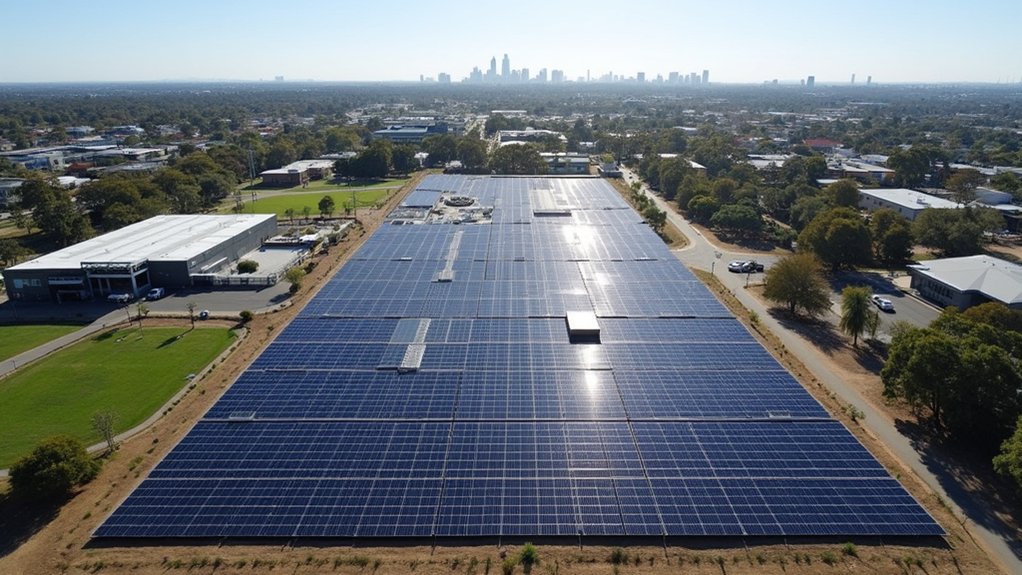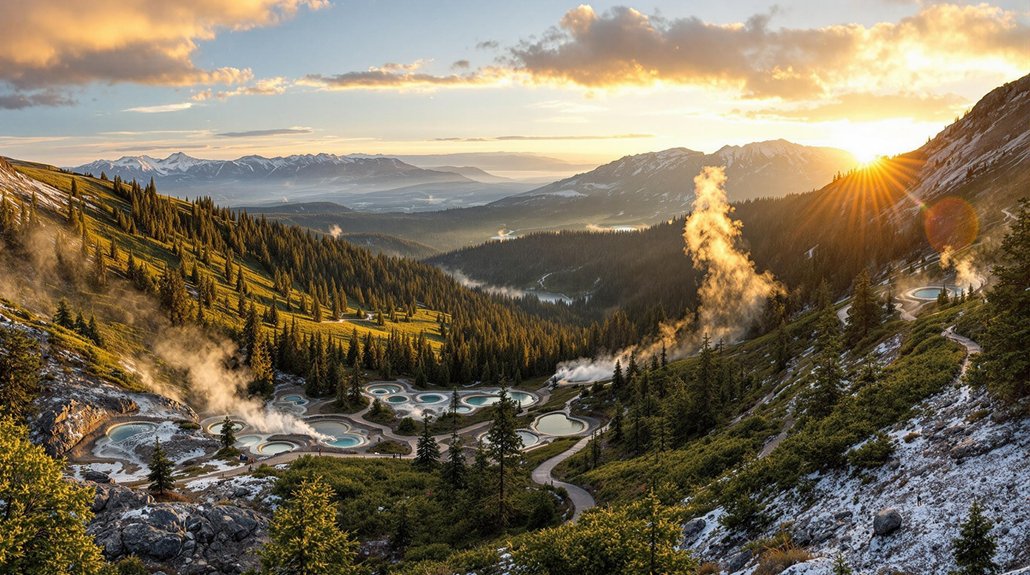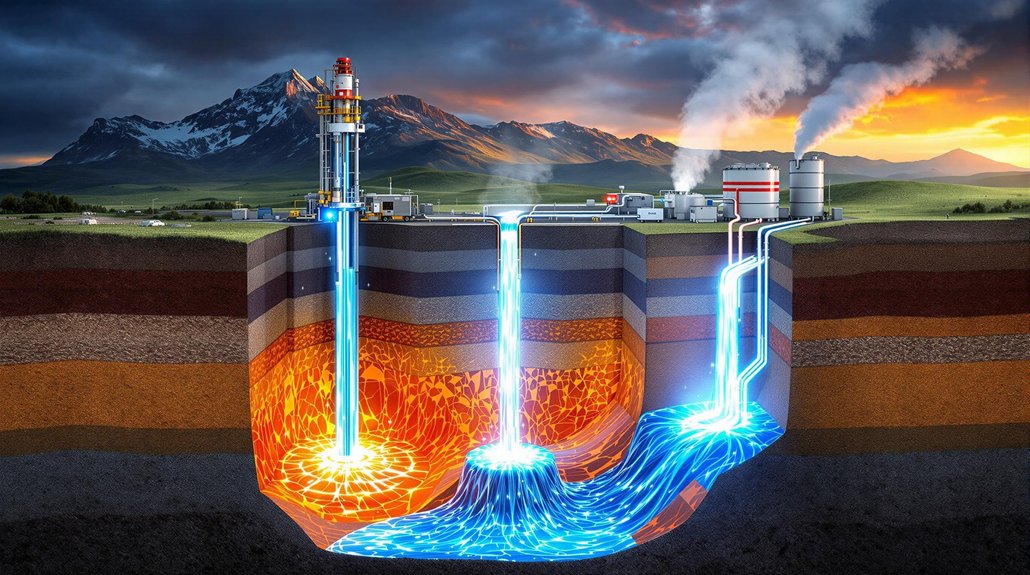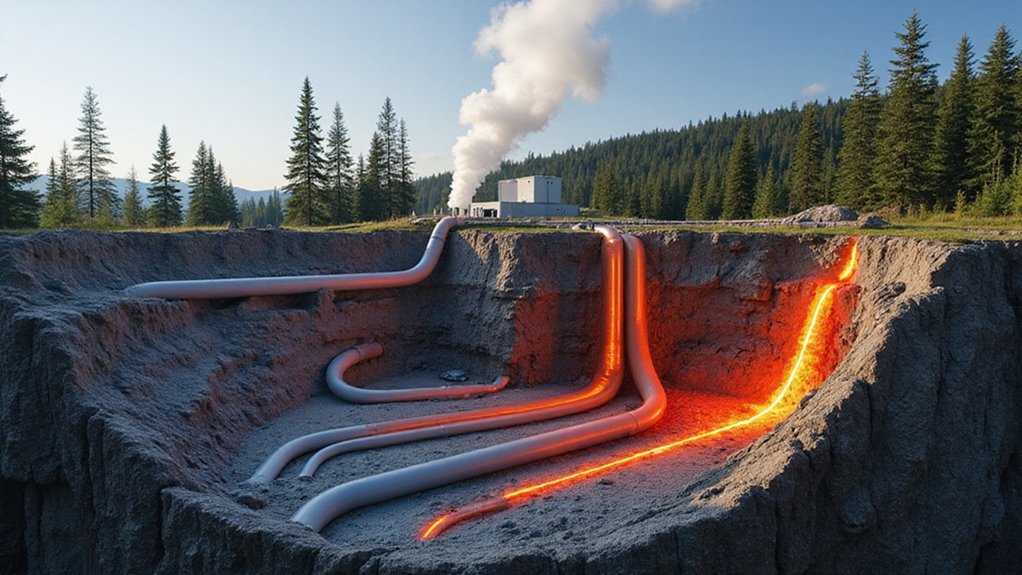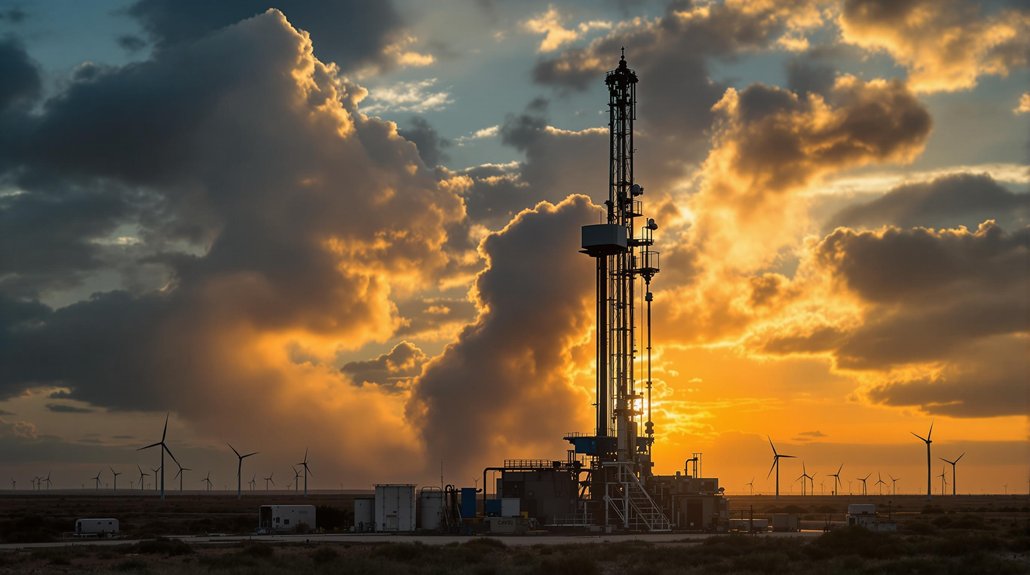Earth’s untapped geothermal energy holds immense potential to replace fossil fuels and nuclear power. Scientists estimate that heat stored below 5,000 meters could meet global electricity demands 140 times over. With advancing drilling technologies, geothermal power plants can now access deeper resources nearly anywhere on the planet. This renewable source operates at 75% efficiency with a 96% capacity factor, far outperforming solar and wind. The path to clean, consistent energy lies beneath our feet.
While most renewable energy discussions focus on wind and solar, geothermal energy remains a largely untapped power source with enormous potential. This energy comes from heat stored deep within the Earth, found in both high-temperature areas like volcanoes and in rocks throughout the planet.
In 2022, 24 countries generated about 92 billion kilowatt-hours of electricity from geothermal sources. The United States leads with nearly 4,000 megawatts of installed capacity, followed by Indonesia, Turkey, Philippines, and New Zealand. These five nations represent over two-thirds of global geothermal power.
Unlike solar and wind, which operate at utilization rates below 30% and 15% respectively, geothermal plants maintain impressive efficiency rates above 75%. This reliability makes geothermal a stable energy source for both electricity generation and heating systems. The technology’s 96% capacity factor makes it one of the most reliable renewable energy sources available today.
Geothermal energy delivers consistent power at 75% efficiency, outperforming intermittent wind and solar alternatives.
The true potential of geothermal energy is staggering. Technical estimates suggest it could meet global electricity demand 140 times over. At depths less than 5,000 meters, the potential reaches 42 terawatts, while deeper resources between 5,000-8,000 meters exceed 550 terawatts.
Enhanced Geothermal Systems (EGS) represent the future of this energy source. These systems can access heat in almost every region worldwide. The United States has tapped less than 0.7% of its geothermal potential, with most remaining resources accessible through EGS technology. Globally, geothermal heating and cooling applications have seen significant growth with an annual rate increase of approximately 9% between 2015 and 2020.
The depth at which developers drill determines resource availability. At 2,000 meters, only certain regions have suitable heat for electricity generation. But new drilling technologies exploring beyond 3,000 meters open possibilities for nearly all countries. By 7,000 meters, almost every region globally has technically suitable resources.
Ground source heat pumps, which use shallow geothermal resources, already provide efficient heating and cooling while using 75% less energy than conventional systems. Geothermal power plants not only generate clean energy but also meet clean air standards with minimal emissions. As drilling technology advances and costs decrease, deeper geothermal resources could eventually replace both fossil fuels and nuclear power, providing clean, consistent energy worldwide with minimal environmental impact.
References
- https://css.umich.edu/publications/factsheets/energy/geothermal-energy-factsheet
- https://www.eia.gov/energyexplained/geothermal/use-of-geothermal-energy.php
- https://www.irena.org/Publications/2023/Feb/Global-geothermal-market-and-technology-assessment
- https://www.iea.org/reports/the-future-of-geothermal-energy/executive-summary
- https://www.iea.org/reports/the-future-of-geothermal-energy/global-geothermal-potential-for-electricity-generation-using-egs-technologies

